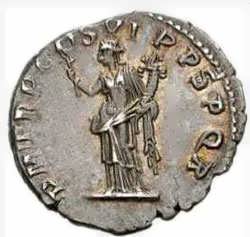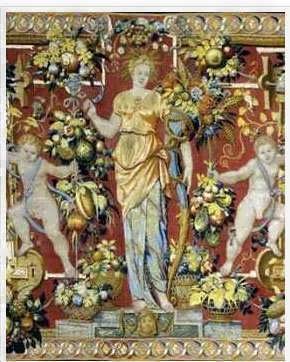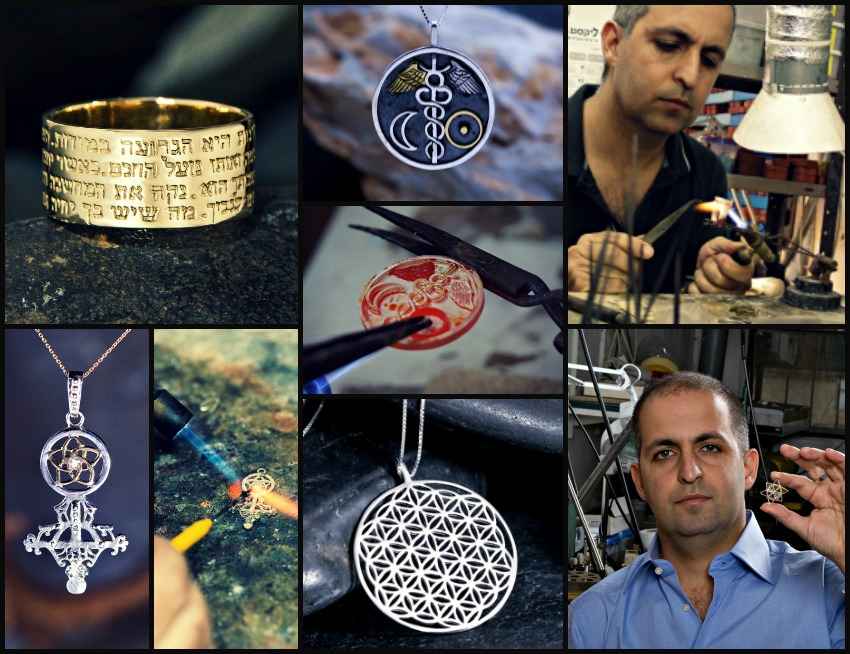The Horn of Plenty
The
Horn of Plenty, also known as The
Cornucopia
is classical antiquity that assumes a horn-like shape and is
believed to symbolize nourishment and
limitless abundance.
Its shape in a large container overflows with produce such as
flowers, nuts, grains, and fruits. The name takes roots from the
Latin language with the term Cornu meaning horn while Copiae
represents abundance or plenty (Adkinson, 2009). In modern
culture, the Horn of Plenty signifies the numerous roads every
individual can embark on and travel through as he makes choices
while seeking for fulfilling opportunities as well as pursuing his
destiny. There are several symbolic messages stemming from this
symbol all taking root from various folklore stories and
mythologies.
As the Greek mythology would have it, the Horn of Plenty is
associated with two legends:
Amalthea and Zeus as well as
Amalthea's horn and Hercules. Notably, it is believed that the
symbol dates back to the 5th BC. The first mythological
description connects the symbol with Zeus' infancy. The story
narrates how upon his birth, Zeus was placed under nymphs
Adrasteia and Ida's care by his mother Goddess Rhea as well as his
grandmother known as Goddess Gaea. Adrasteia and Ida are
well-known daughters of the king of Crete commonly known as
Melisseus. It's during this period where Zeus was nourished by
milk from the phenomenal goat Amalthea and as a token of his
appreciation, he placed the goat among heavens constellations.
This was followed by the rewarding of Adrasteia and Ida with one
of Amalthea's horns which were conferred with the magic of
perpetual fullness of whatever the possessor of this horn desired
for sustenance. Another version of Amalthea and Zeus tells a story
of how the goat nurtured and raised Zeus from the time he was an
infant while shielding him from his father, Cronos. Amalthea is
believed to nurse and protect Zeus in the mountains of Crete
preparing him to become a future God. However, one day as they
were playing, Zeus broke the goat's horn accidentally and in his
remorse, he offered to repay Amalthea by granting Amalthea the
wish of having the horn filled with whatever she wished on a
perpetual basis.
The second myth tells the story of Hercules, son of Zeus
and the Princess of Alcmena. The legend tells of how Achelous (God
of the River) fought in a battle against Hercules in an attempt to
win the love of King Aeneus' beautiful daughter Deianira. During
this battle, Achelous transformed himself into various creatures
as part of his tactics to defeat Hercules, and at one point, while
being pinned to the ground by Hercules, he transformed himself
into a serpent, then a bull but was overpowered by Hercules who
managed to break one of his horns. With this defeat, Achelous
shifted back to his god-like form and returned to the river. There
are two varying ends to this mythology. One, Hercules and Deianira
took this horn and filled it with fruits, flowers and grains in
celebration of their marriage and two, naiads (water nymphs)
possessed the horn, sanctified it filling it with fragrant flowers
and abundant fruit before awarding it to the Goddess of Plenty who
called it the Cornucopia (Huggens, 2013).
The Horn of Plenty was used in various ways. First, in the ancient
world, the Horn of Plenty was a widely popular religious symbol.
It was stamped on Jewish coins commencing in the
Maccabean
period and was also used in rings and seals as well as
architecture. It was also used in the Hellenistic era, where most
civilizations were greatly influenced by the Greeks (Nasrallah,
2010). Traditional European cultures also commemorated the end of
harvest through creating corn dollies or corn maiden that were
aimed at ensuring prosperity and fertility in days to come and its
earliest forms involved the use of the Horn of Plenty (Adkinson,
2009).
Fig
1. A Rome mint (Traianus Denarius). Source: (Huggens, 2013).
Additionally, with Christianity becoming the official Roman
religion, Abundantia (a Roman Goddess often portrayed in
3rd-century coins and heavily associated with the symbol) was
banned along with other pagan spirits. However, some followers
were hesitant on banishing this symbol thus went underground with
Abundantia which would later resurface in medieval Europe in the
form of Dame Abundance. During this period, worshiping of
Abundantia was only by witches and in secret. It was believed that
Dame Abundance visited at night bringing endless luck and
prosperity (Nasrallah, 2010).
Fig
2. Abundantia with the Horn of Plenty. Source: (Adkinson, 2009).
As a ritual tool, this symbol has adopted numerous forms depicted
both in ancient and modern times. Initially, it was in its
original actual curved horn form, but that has changed and
fashioned out with other materials such as ceramics, wicker,
stone, metal or wood. Presently, most Cornucopias take the form of
horn-shaped baskets. Today, the Horn of Plenty is used as a ritual
tool in several ways. First, it's used during the fall equinox
offerings where cornucopias are filled with overflowing assorted
fruits, nuts, flowers, and vegetables in Thanksgiving mode. It is
also used during ritual feastings, a sign of the season, house
blessing, prosperity magic and deity invocation (Adkinson, 2009).
In conclusion, this symbol was a powerful figure depicted in
paintings in medieval Europe but has changed over the years.
Today, they are autumn centerpieces taking various forms and
depicted in numerous artworks. This symbol still resonates with
people to this day and its relevance to fruits, earthly prosperity
and abundance remain relevant and unchanged across centuries.
References"
Adkinson, R. (2009). Sacred symbols: A visual tour of world faith.
New
York: Harry N. Abrams
Huggens, K. (2013). Complete guide to tarot illuminati.
Nasrallah, L. S. (2010). Christian responses to Roman art and
architecture: The second-century church amid the spaces of empire.
Cambridge: Cambridge University Press.
About the Author
David Weitzman
The jewelry artist David Weitzman combines ancient and sacred knowledge into a unique line of jewelry designed to bring people both beauty and inspiration. David's artwork harnesses the power of spiritual symbols and sacred geometry from around the world to bring those wearing this sacred jewelry happiness, vitality, excitement, and love.



![]()
